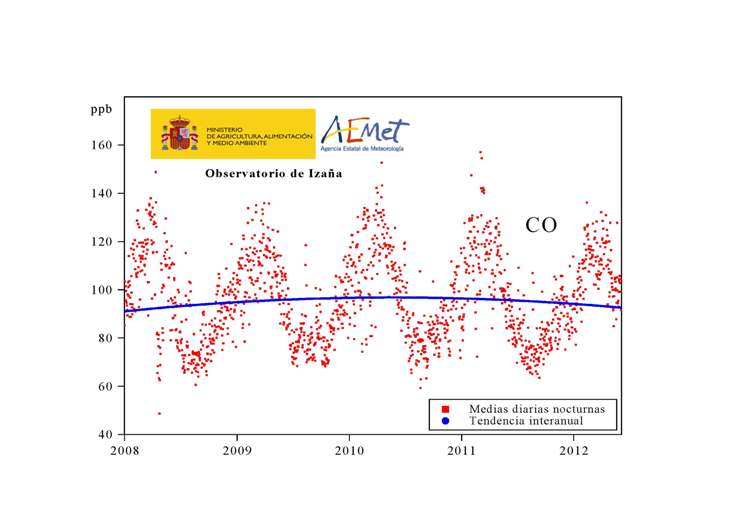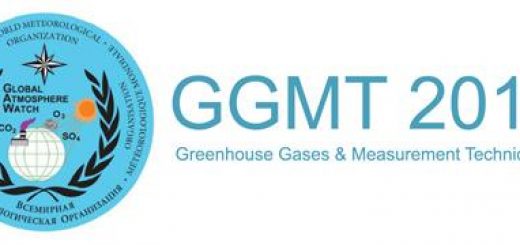Atmospheric Carbon Monoxide measurements time series at Izaña Observatory
The upper figure (click on it to get a high resolution pdf file) shows the atmospheric carbon monoxide time series measured during the night at Izaña Observatory from 2008 to present, using a gas chromatograph equipped with a gas reduction detector. The interannual trend increases till the beginning of 2010, and then decreases. The mean measured carbon monoxide concentration is around 95 ppb, that is, there are 95 CO molecules with in a thousand million of dry air molecules.
CO is a reactive gas that affects the methane (CH4) cycle, the second most important greenhouse gas. Methane and carbon monoxide are destroyed reacting with the hydroxyl (OH) radical. So, and increase in CO concentration, decreases the concentration of OH, and therefore, increases the concentration of CH4 decreasing its destruction rate. This is the reason by which it is said that CO acts as an indirect greenhouse gas.
Carbon monoxide atmospheric lifetime ranges from ten days in summer over continental regions to more than a year over polar regions in winter. Its relatively short lifetime and its uneven distribution of sources produce large temporal and spatial CO variations. The major sources of carbon monoxide are the combustion of fossil fuels, biomass burning, and the oxidation of methane and other hydrocarbons; whereas the major sink of CO is the reaction with OH, being surface deposition a small sink. The value of the CO concentration in the atmosphere results from the approximate equilibrium between sources and sinks, and contrary to what happens with carbon dioxide, the anthropogenic emissions of CO do not produce an accumulation of CO in the atmosphere.
The annual cycle amplitude from the minimum to the maximum is 40.7 ppb. Its maximum happens in late March, while its minimum happens in middle August, due to the seasonal variations of OH controlled by the solar radiation. The diurnal cycle of CO reaches its maximum around 13:00-15:00 due to the arrival of contaminated air to Izaña through an upslope wind coming from lower levels. During night, the measurement conditions at Izaña are representative of the free troposphere.







